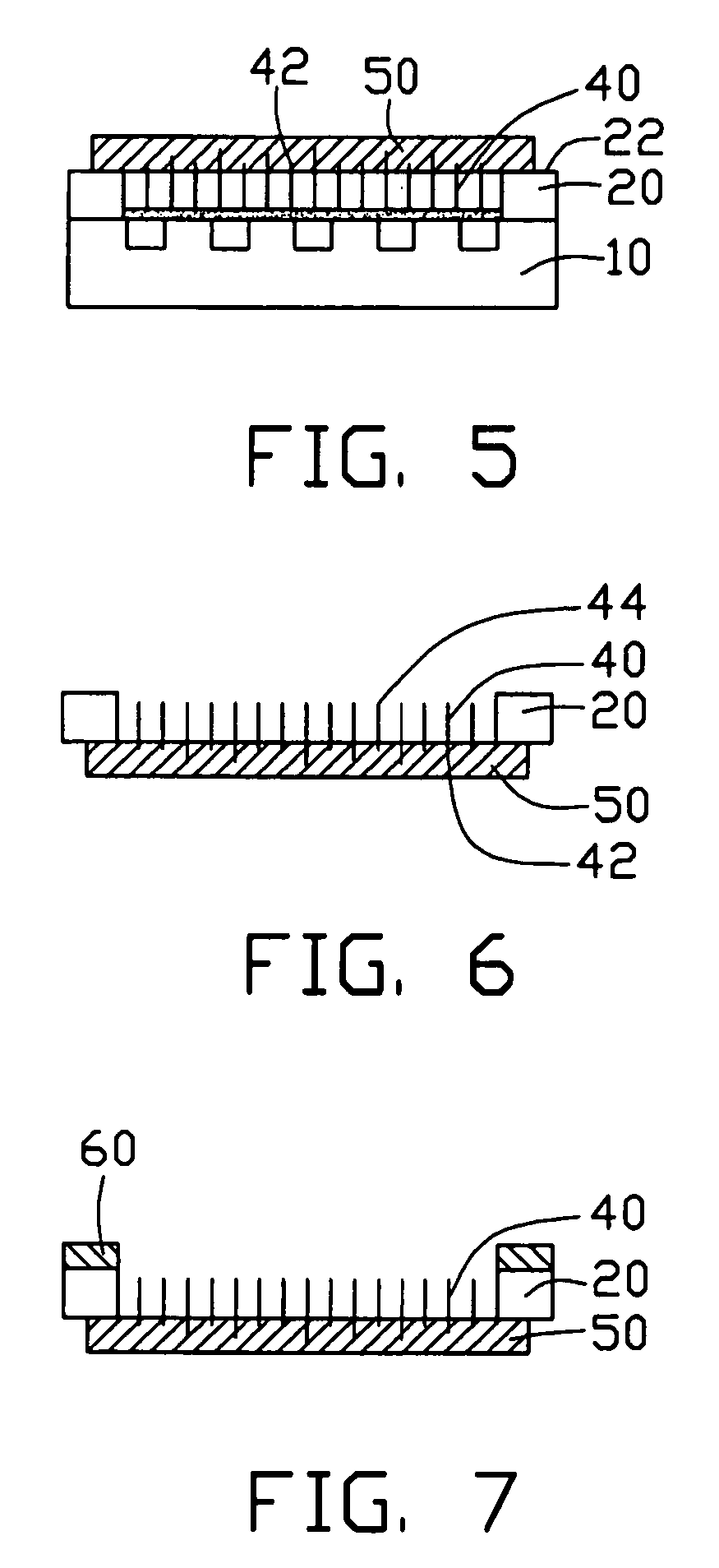Carbon nanotube-based field emission device
a carbon nanotube and emission device technology, applied in the manufacture of electric discharge tubes/lamps, discharge tubes luminescnet screens, electrode systems, etc., can solve the problems of reducing the uniformity and stability of electron emission from carbon nanotube bundles, unable to predict or control, and not being able to predict the effect of emission, etc., to achieve the effect of improving the uniformity and stability of electron emission
- Summary
- Abstract
- Description
- Claims
- Application Information
AI Technical Summary
Benefits of technology
Problems solved by technology
Method used
Image
Examples
Embodiment Construction
[0019]Reference will now be made to the drawings to describe a preferred embodiment of the present invention in detail.
[0020]Referring initially to FIG. 7, a carbon nanotube-based field emission device in accordance with a preferred embodiment of the present invention comprises: a cathode electrode 50, a carbon nanotube array 40 formed substantially perpendicularly to the cathode electrode 50, and gate electrodes 60 formed on an insulative barrier 20 adjacent the carbon nanotube array 40. The barrier 20 is positioned on the cathode electrode 50, and insulates the gate electrodes 60 from the cathode electrode 50. The carbon nanotube array 40 comprises a plurality of carbon nanotubes (not labeled). Preferably, each carbon nanotube has an open tip to facilitate electron emission therefrom. Referring also to FIG. 6, the carbon nanotube array 40 defines a growth end 42, and a root end 44 opposite to the growth end 42. The growth end 42 is embedded in and thus is in electrical contact wit...
PUM
| Property | Measurement | Unit |
|---|---|---|
| flatness | aaaaa | aaaaa |
| height | aaaaa | aaaaa |
| height | aaaaa | aaaaa |
Abstract
Description
Claims
Application Information
 Login to View More
Login to View More - R&D
- Intellectual Property
- Life Sciences
- Materials
- Tech Scout
- Unparalleled Data Quality
- Higher Quality Content
- 60% Fewer Hallucinations
Browse by: Latest US Patents, China's latest patents, Technical Efficacy Thesaurus, Application Domain, Technology Topic, Popular Technical Reports.
© 2025 PatSnap. All rights reserved.Legal|Privacy policy|Modern Slavery Act Transparency Statement|Sitemap|About US| Contact US: help@patsnap.com



